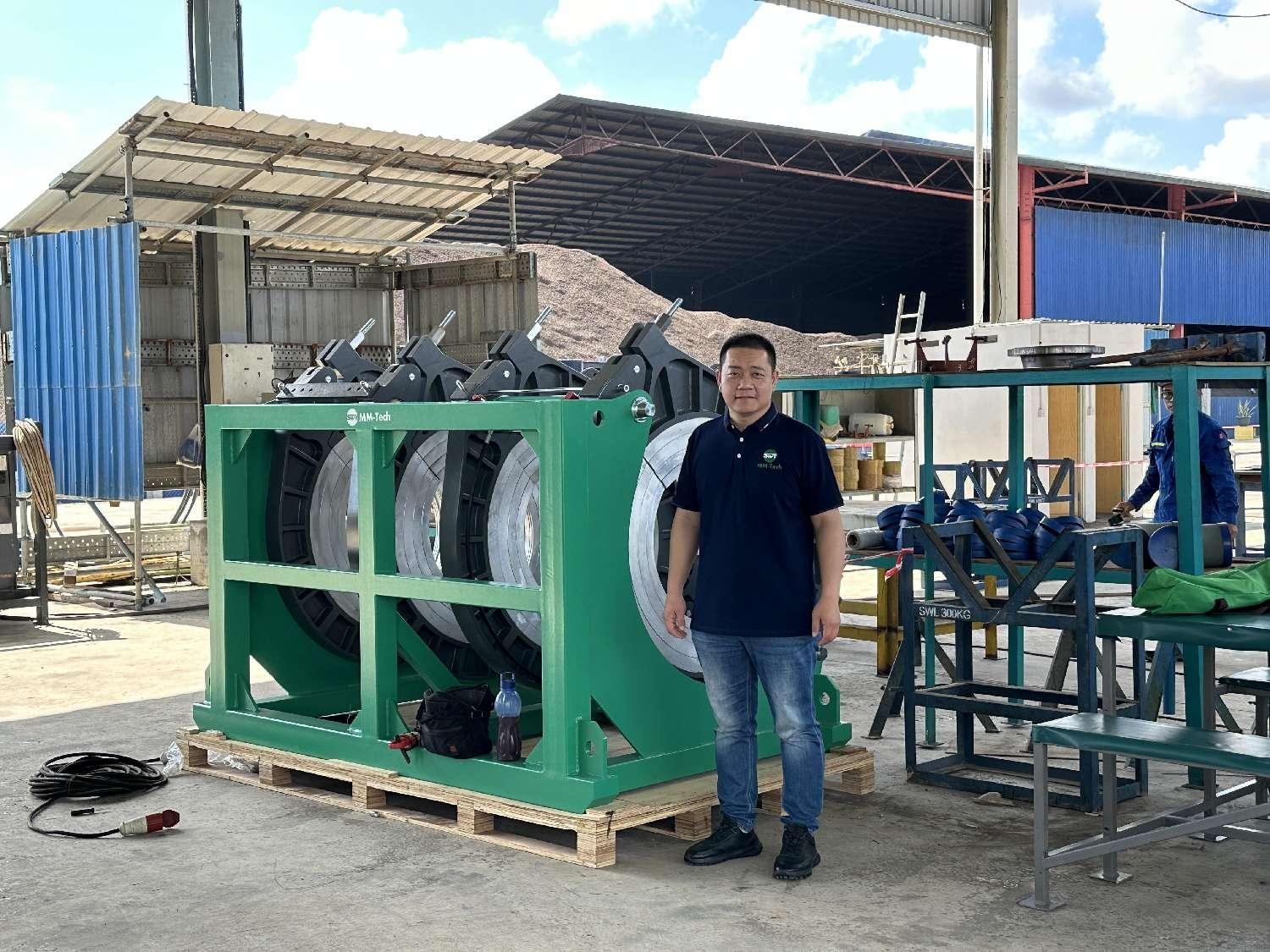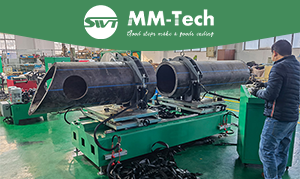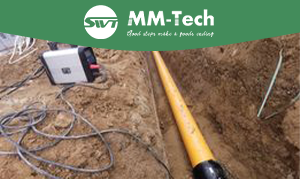Fitting fabrication machines bring groundbreaking innovations to the pipe assembly industry. These machines automate processes, ensuring precision and reducing errors. Automated welding systems improve consistency, while robotic cutting handles complex shapes with speed. Prefabrication accelerates installation by minimizing on-site labor. With a projected market growth to 92.33 billion USD by 2034, this technology drives efficiency and cost savings.
Key Takeaways
Fitting machines build pipes automatically, making them accurate and error-free. This helps finish projects faster and saves money on workers.
New tools like auto cutting and welding reduce wasted materials. This makes sure all parts fit well, improving how things work overall.
Buying fitting machines can cut costs and increase profits. Better work speed and quality bring long-term money savings.
Overcoming Traditional Challenges in Pipe Assembly
Inefficiencies in Manual Pipefitting Processes
Manual pipefitting often involves labor-intensive tasks that slow down the assembly process. Workers must measure, cut, and fit pipes by hand, which increases the likelihood of inconsistencies. These inefficiencies lead to delays and higher labor costs. For instance, traditional methods lack the precision of automated systems, making it difficult to maintain uniformity across pipe assemblies.
Studies show that introducing simulation modeling can improve material flow and reduce lead times in pipe fabrication. This approach highlights how modern tools can address inefficiencies by streamlining processes and enhancing productivity. By adopting advanced technologies, you can eliminate repetitive tasks and focus on achieving better results in less time.
High Error Rates and Material Waste in Pipe Fabrication
Traditional pipe fabrication methods often result in high error rates due to manual processes. Inaccurate cuts and improper fittings lead to significant material waste, driving up costs. Modern approaches, such as automated cutting and welding systems, drastically reduce these issues. For example, advanced cutting technologies like plasma and laser cutting ensure precise measurements, minimizing waste.
The comparison between traditional and modern methods reveals stark differences:
Traditional Methods | Modern Methods |
|---|---|
High error rates due to manual processes | Enhanced precision through automation |
Significant material waste | Minimal waste with advanced technologies |
Labor-intensive and time-consuming | Increased efficiency with prefabrication |
Limited quality control | Improved quality control with CAD tools |
By transitioning to automated systems, you can achieve higher accuracy and reduce material loss, ensuring a more efficient fabrication process.
Scalability and Customization Limitations in Traditional Methods
Traditional pipe assembly methods struggle to meet the demands of large-scale projects. Manual processes limit scalability, making it difficult to handle complex pipefitting requirements. Additionally, customization options are often restricted, as traditional tools lack the flexibility to adapt to unique designs.
Innovative techniques in pipe fabrication now allow for greater adaptability. Prefabrication and modular construction enable you to scale operations while maintaining quality. Platforms like MSUITE enhance collaboration among teams, ensuring better project outcomes. These advancements make it easier to customize pipe assemblies to meet specific needs, improving overall efficiency.
Key Features of MM-Tech’s Fitting Fabrication Machines
Automation and Precision in Pipefitting Fabrication
MM-Tech’s fitting fabrication machines excel in automation and precision, transforming how you approach pipefitting fabrication. Automated welding systems ensure consistent, high-quality welds by reducing human error. These systems also enhance productivity, allowing you to complete projects faster. Advanced cutting technologies, such as plasma and laser cutting, deliver precise measurements, minimizing material waste and ensuring components fit perfectly during assembly.
The integration of CNC machines further boosts precision. These machines manufacture parts based on digital designs, eliminating inconsistencies common in manual methods. As a result, you can achieve higher accuracy and reduce rework, saving both time and resources.
Tip: Leveraging automation in pipe fabrication not only improves efficiency but also enhances safety by reducing manual labor in hazardous conditions.
Advanced Customization for Complex Pipe Assembly Needs
MM-Tech’s machines offer unparalleled customization capabilities, making them ideal for complex pipe assembly projects. With tools like Computer-Aided Design (CAD), you can create detailed 3D models tailored to your specific requirements. This level of customization ensures that even intricate designs are executed with precision. Robotic cutting and bending systems further enhance flexibility, allowing you to handle unique shapes and sizes effortlessly.
The “Model to Machine” approach streamlines the fabrication process by connecting digital designs directly to manufacturing. This method enables you to produce consistent, high-quality components while accommodating diverse project needs. Whether you’re working on large-scale infrastructure or specialized installations, MM-Tech’s advanced tools and equipment empower you to deliver exceptional results.
Integration with Digital Tools for Enhanced Pipe Fabrication
Digital tools play a crucial role in enhancing pipe fabrication when paired with MM-Tech’s machines. By integrating 3D modeling software and Building Information Modeling (BIM), you can improve collaboration and accuracy throughout the assembly process. These tools allow you to visualize designs, detect potential clashes, and make data-driven decisions before fabrication begins.
CNC machines, guided by digital designs, produce components with unmatched precision. This integration reduces variability and ensures that every part meets exact specifications. Automated welding systems further enhance consistency, delivering superior welds with minimal effort. The result is a streamlined fabrication process that saves time, reduces costs, and improves overall project outcomes.
Note: Digital integration not only optimizes fabrication but also supports sustainability by reducing material waste and promoting efficient resource use.
Benefits of Using Fitting Fabrication Machines in Pipe Assembly
Boosting Productivity and Reducing Turnaround Times
Fitting fabrication machines significantly enhance productivity in pipe assembly. By automating repetitive tasks, these machines allow you to complete projects faster. The integration of Building Information Modeling (BIM) and automation accelerates the design and fabrication process. This results in shorter project timelines and improved efficiency.
Utilizing advanced machinery enhances accuracy and speed in pipe assembly.
Shorter project timelines are achieved.
Labor costs are reduced due to improved efficiency.
These machines streamline the entire pipe fabrication process, enabling you to handle more projects in less time. Faster turnaround times mean you can meet tight deadlines without compromising on quality.
Minimizing Errors and Material Waste in Pipefitting
Traditional pipefitting methods often lead to errors and material waste. Fitting fabrication machines address these issues by ensuring precise cuts and welds. Automated systems reduce human error, which minimizes waste and improves overall efficiency. Advanced cutting technologies, such as plasma and laser cutting, ensure accurate measurements, resulting in better-fitting pipes during assembly.
By adopting these machines, you can implement quality control measures that maintain consistency across all pipe assemblies. This not only reduces material loss but also ensures that every pipe meets exact specifications. The result is a more efficient pipe fabrication process with minimal waste.
Lowering Operational Costs and Maximizing ROI
Fitting fabrication machines lower operational costs by reducing labor requirements and minimizing downtime. These machines also maximize your return on investment (ROI) through increased throughput and improved quality. The following table highlights key ROI metrics:
Metric Type | Calculation Example | ROI Percentage |
|---|---|---|
Soft Costs | ($107.50 – $57.69)/$57.69 = 85.34% | 85.34% |
Downtime Savings | ($125 – $57.69)/$57.69 = 116.67% | 116.67% |
Changeover Time Reduction | ($225 – $57.69)/$57.69 = 290% | 290% |
Increased Throughput | ($96 – $5.76)/$5.76 = 1,567% | 1,567% |
Quality Improvements | ($231 – $57.69)/$57.69 = 300% | 300% |

These metrics demonstrate how fitting fabrication machines contribute to efficient pipe fabrication while delivering substantial cost savings. By investing in these machines, you can achieve long-term financial benefits and maintain a competitive edge in the industry.
Fitting fabrication machines have transformed pipe fabrication by enhancing efficiency and precision. You can now assemble pipes faster, with fewer errors and reduced costs. MM-Tech’s innovative technology ensures consistent results, making it a game-changer for the industry. As advancements continue, these machines will redefine how you approach pipe fabrication, ensuring long-term efficiency.
FAQ
What types of pipes can MM-Tech’s Fitting Fabrication Welding Machine handle?
MM-Tech’s machine supports HDPE, PP, PPR, and PVDF pipes, ensuring compatibility with various pipe materials used in modern fabrication projects.
How does automation improve pipe assembly processes?
Automation reduces manual effort, enhances precision, and speeds up pipe assembly. It ensures consistent results, minimizes errors, and optimizes the overall fabrication workflow.
Can MM-Tech’s machines handle large-scale pipe projects?
Yes, MM-Tech’s machines are designed for scalability. They accommodate pipe sizes from 315mm to 1200mm, making them suitable for extensive pipe assembly operations.












